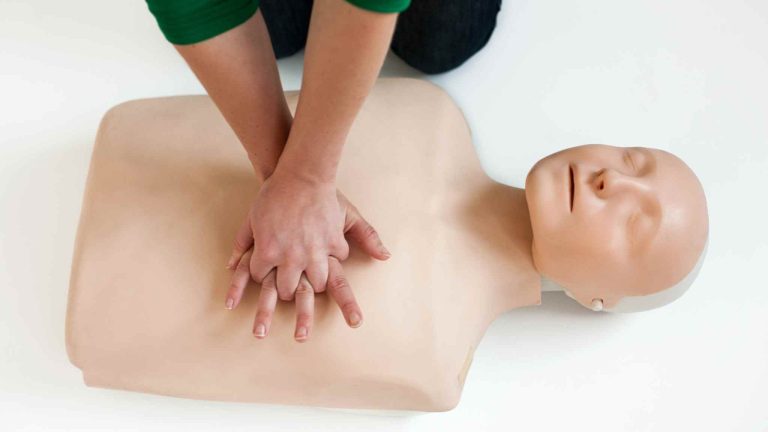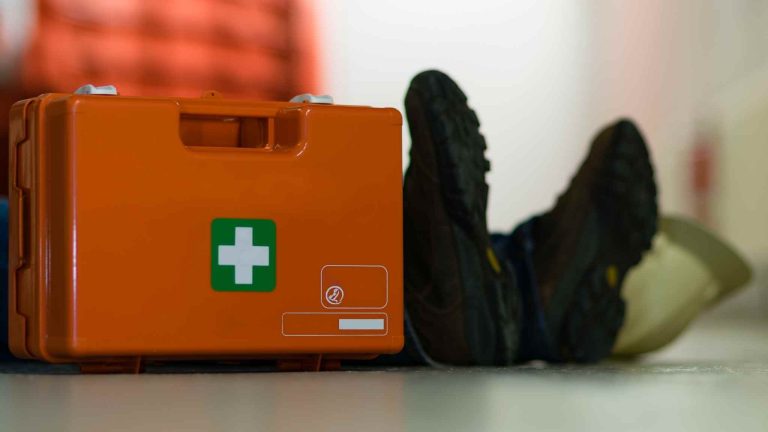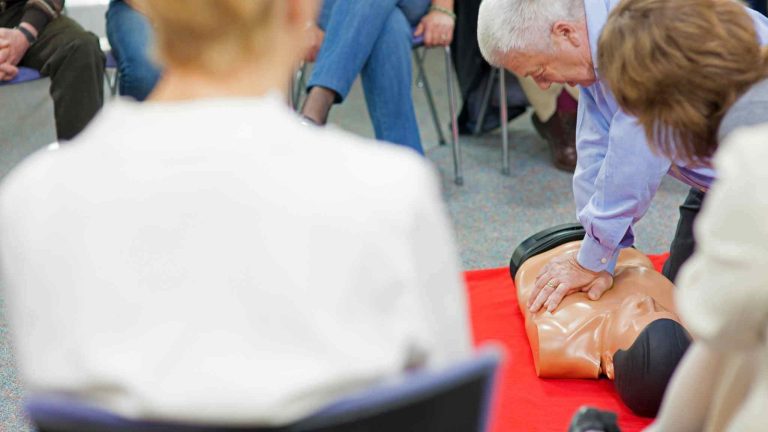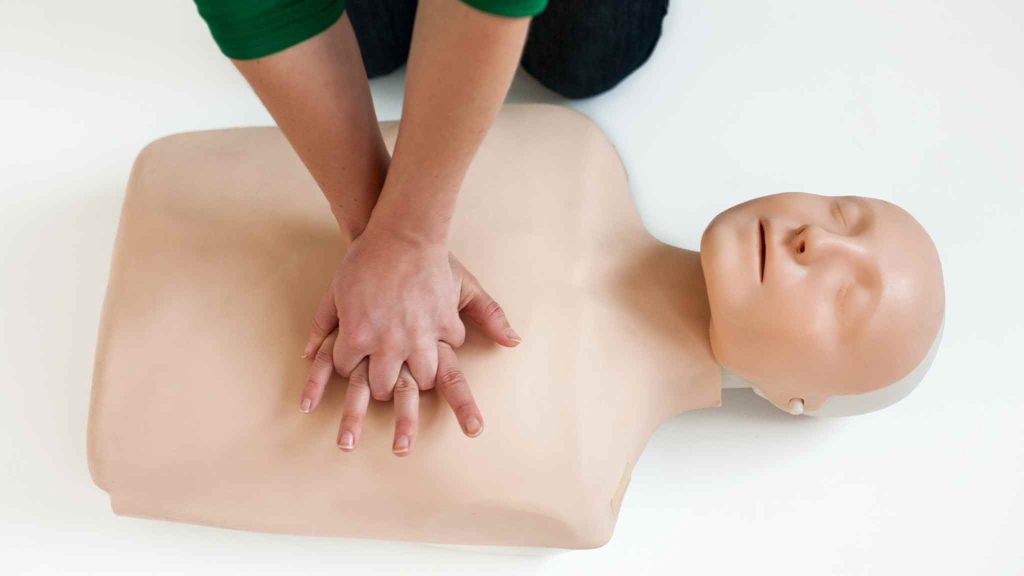Why a CPR First Aid Course is essential

CPR first aid refers to Cardiopulmonary resuscitation which is the actions taken by a bystander when someone goes into cardiac arrest.
There is a common misconception that a cardiac arrest is a heart attack and that the objective of doing CPR is to start their heart and bring the person back to life. This is not necessarily correct.
Although both may be linked and vaguely correct, a heart attack is when the blood flow to the heart muscle is compromised, usually by a clot. This can be a build up of cholesterol, fat or other substances that can cause a build up in the arteries that lead to the heart.
The lack of blood flow to the heart can damage or destroy the heart. A heart attack may also be referred to as a myocardial infarction (or an MI). Around 70% of people have a heart attack at home, which is unfortunate as they are often alone with no bystanders nearby to call for help, we have a download on instructions for this.
Currently, about 9 in 10 people who have cardiac arrest outside the hospital die
Heart attacks can result in cardiac arrest if the heart muscle is so damaged that it stops beating.
During cardiac arrest, the heart cannot pump blood to the rest of the body, including the brain and lungs. Death can happen in minutes without treatment.
CPR uses chest compressions to mimic how the heart pumps. This is the objective of CPR, literally just to keep the existing oxygenated blood flowing around the body. These compressions help keep blood flowing throughout the body. We are not trying to ‘fix’ the issue – although some lucky bystanders may end up actually doing this, otherwise we are just sustaining the person until emergency services arrive.
Symptoms of heart attack include
- Chest pain
- Nausea
- Fatigue
- Feeling weak/light headed
- Discomfort in arms/shoulders
- Shortness of breath
A cardiac arrest is when the The heart stops beating abruptly from a malfunction in the heart’s electrical system or a sudden change in the circulatory system.
Symptoms of a cardiac arrest are more obvious. They include:
- Collapse
- Unconscious
- Not breathing
- No pulse

If someone suffers a cardiac arrest in front of you, CPR first aid must be commenced
How to perform CPR
- Place both hands between the nipples in the centre of the chest
- Compress the chest at the speed of two per second
- Push to approx ⅓ of the depth of the chest
- If possible, give two rescue breaths after every 30 compressions – if you are unable to do this, just continue continuous compressions.
- If an AED (otherwise known as defib or automated external defibrillator) then turn it on and follow the instructions.
In Australia approximately 30,000 people sustain a sudden cardiac arrest outside of a hospital and are treated by emergency medical services each year.
That’s 575 Australians suffering a sudden cardiac arrest every week.
We know that CPR doubles a person’s chance for surviving a cardiac arrest and any attempt is better than nothing.
Not everyone is confident to perform CPR first aid
Some of the barriers we identified around why people don’t provide bystander CPR are communication issues, a lack of confidence and the emotional state of the caller.
Sometimes people may have difficulty identifying when someone is actually having a cardiac arrest, as often it is quite sudden.
CPR training improves a person’s confidence to perform CPR and their ability to identify cardiac arrest. You can be CPR trained on the internet, you can get books or you can go through a more formal process of a first aid course. Anyone can learn CPR these days and we believe that everyone should.

Do you need to do a CPR first aid course?
If you need to refresh your CPR skills, check out our courses. We come to your workplace and will do a minimum of 10 people onsite, making it quick and easy for your group. 90% of the CPR first aid course can optionally be done online.
We run first aid and CPR courses in Brisbane, Perth, Sydney, Melbourne and Adelaide.
Want more? We’ve got you covered…
Our Baby First Aid Courses
Our baby first aid courses are available in person in your home and online. We run classes in your home with groups of 2, 4 or up to 10 in Sydney & Melbourne and you can book in 3 easy steps!
- Pick your class
- Follow the prompts to purchase
- We will contact you within 24 hours to lock in your date of choice
Our First Aid Certificate Courses
We run most of the popular first aid courses Australia wide. HLTAID011 Provide First Aid, HLTAID009 Provide CPR, HLTAID012 Provide First Aid in an Education & Care Setting, RAMOAP (anaphylaxis), Mental Health first aid and CPR/LVR to name a few.
Book your public spot online or contact us if you have a group of 5+ people for onsite training.
Here are some other resources you may enjoy!
FREE GUIDE: Your Virtual Baby First Aid Kit
FREE GUIDE: Introducing Common Allergy Foods & Allergic Reactions
FREE Workplace Emergency Preparedness Plan: Grab this at the bottom of every page!
Follow for baby & child first aid and allergy info and tips on Instagram, TikTok & Facebook all @thenestcpr


